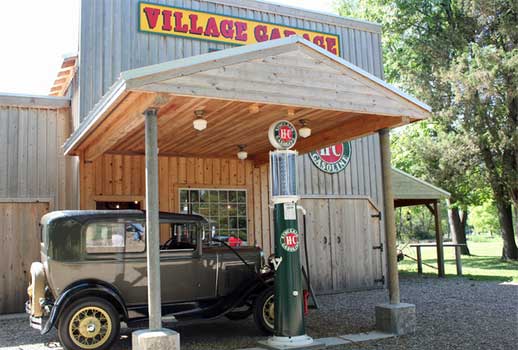Transportation in Transition – The 1930’s
This building represents the transitional period in American transportation history when both the horse and the ‘horseless carriage’ were common sights in our area.
By the 1930’s, the preferred method of everyday transportation was the automobile, but horses were still widely used on farms, and blacksmiths were depended upon for many types of machinery repair.
On the side of the building a blacksmith shop shows the evolution from blacksmithing to servicing the automobile. The visible gas pump in the front of the garage, dates from the 1920s.
Many early automobile filling stations started out as blacksmith shops. As times changed, the ‘smithy’ was forced to learn new skills to keep his business going.
It was a natural progression for many. Blacksmiths were well equipped to perform body and frame repairs with their existing tools. And most already had some experience tinkering with stationery gas engines widely used to supply power for cream separators and milking machines until electricity reached area farms.
Although this building is new construction, the items displayed inside—and outside—are appropriate to the time period, giving you a good idea what it was like to “Fill ‘er Up” in the early days of automobile travel.

